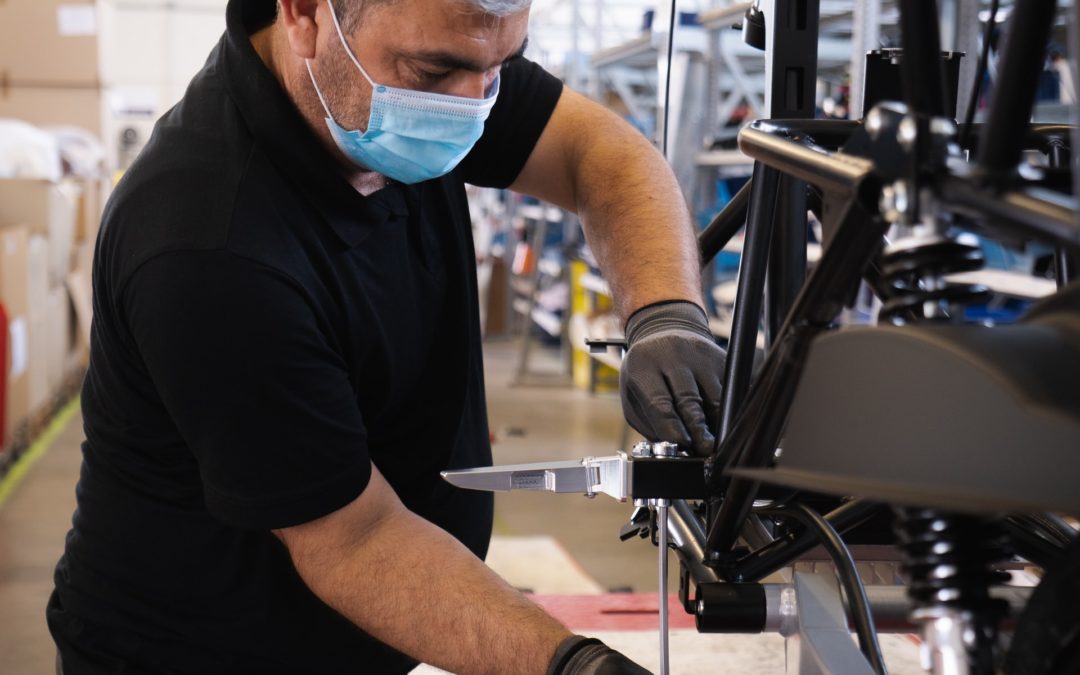When Was Your Last Ergonomics Analysis?
It’s one of the wisest questions you could ask yourself regarding your business. Why? Because so many success factors hinge on employee health and safety. An ergonomic risk assessment will determine your action list for improving worker health and safety. That affects productivity, and productivity improvement exponentially increases your bottom line.
What Is an Ergonomic Risk Assessment?
An ergonomic risk assessment (or ergonomics analysis) is an objective measure of the risk factors in your work environment that may lead to workforce musculoskeletal disorders or injuries.
When your employees are suffering, their work suffers. And when their work suffers, your business suffers. A healthy employee is a happy employee. And happy employees are more productive. These are logical conclusions to a complex web of physical and emotional interactions. Let’s explore these concepts further.
The Proactive Employer Ensures a Comfortable, Healthy Work Environment
Your workforce is an investment in your business. And your company’s productivity directly impacts your bottom line. Pain, whether chronic or due to injury—and whether long term or temporary—obstructs performance and decreases productivity. This could lead to several problems.
- Sick leave
- Slower work pace
- Poor decision-making
- Decreased work quality
- And more
All of these consequences mean the return on your investment plummets. That’s one critical reason why injury and pain mitigation should take center stage in your business. The proactive employer ensures a comfortable, healthy work environment for all employees.
Creating a Healthier, Happier Workplace Means Healthy, Happy Employees
A healthy employee is a happy employee. And happy employees are more productive. You listen to your employees’ concerns. And you address those concerns because you value your employees’ contributions to your business.
When you improve your employees’ work environment—and when you consider their comfort and health—they feel both respected and significant. Job satisfaction reigns supreme, and productivity and performance increase.
Prevent Absentees, Injuries, and Down Time
During an ergonomics analysis, McClure Ergonomics uses scientific ergonomic risk assessment tools to produce your ergonomic risk assessment report. Following the guidance in that report will ensure that your company is doing everything it can to provide a safe, healthy work environment.
Scientific Ergonomic Risk Assessment Tools
- NIOSH Lifting Equation — assesses lifting and lowering task risks
- Rapid Entire Body Assessment (REBA) — measures job task demands on the whole body
- Rapid Upper Limb Assessment (RULA) — evaluates job task demands on the neck, trunk, and upper extremities
- Threshold Limit Value (TLV) Hand Activity — calculates the average hand activity as compared with maximum hand force
- Vibration Risk Assessment — determines exposure to regular, frequent, occasional, or periodic vibrations
McClure Ergonomics also provides employment testing for pre-hires and current staff. This serves as another ergonomic risk assessment tool you could use to decrease work-related injuries and chronic pain conditions. Ensuring that your employees and potential employees are physically capable of performing the tasks you expect facilitates a healthy, safe work environment for all employees.
Want to make sure you cover all of the bases for your employees’ health and safety?
Call TODAY for a consultation!
How to Do a Risk Assessment in the Workplace — Home Office and On Site
According to OSHA guidelines, employers are required to provide ergonomic equipment for both on-site and remote workers. That means you must conduct a risk assessment to determine what equipment is needed. McClure Ergonomics can use its scientific risk assessment tools to uncover shortcomings and provide guidance on proper equipment.
If you want to do a quick risk assessment before calling in the experts, make sure you analyze the following equipment.
4 Crucial Ergonomic Risk Assessment Issues for Office Workers
- Chair — should support spinal curves and allow feet to rest flat on the floor
- Telephone — should include a headset or speaker setting for employees who type and talk on the phone simultaneously
- Computer accessories — should allow upper arms to remain close to the body, elbows to bend at a 90-degree angle, and mouse and trackpad set to a light touch sensitivity
- Monitor — should be directly in front of the employee and behind the keyboard, about an arm’s reach away with the top of the screen at or slightly below eye level
An Ergonomics Risk Assessment Can Provide a Safe Working Environment for All Employees
Whether your work environment entails an office, a construction site, or something in between, a properly conducted ergonomics risk assessment can ensure that all employees enjoy a safe, healthy working environment. For that reason, it’s best to call in the experts.
When Should You Conduct an Ergonomics Risk Assessment?
Your workplace is a living, breathing entity that continually evolves. Procedures, equipment, and job functions can change. Consequently, your employees’ needs will change.
If your business has experienced significant changes that affect the work environment, it’s a good idea to conduct an ergonomics risk assessment. Otherwise, McClure Ergonomics recommends that you conduct an ergonomics analysis about every two years.
Is it time for your company to conduct an ergonomic risk assessment?


